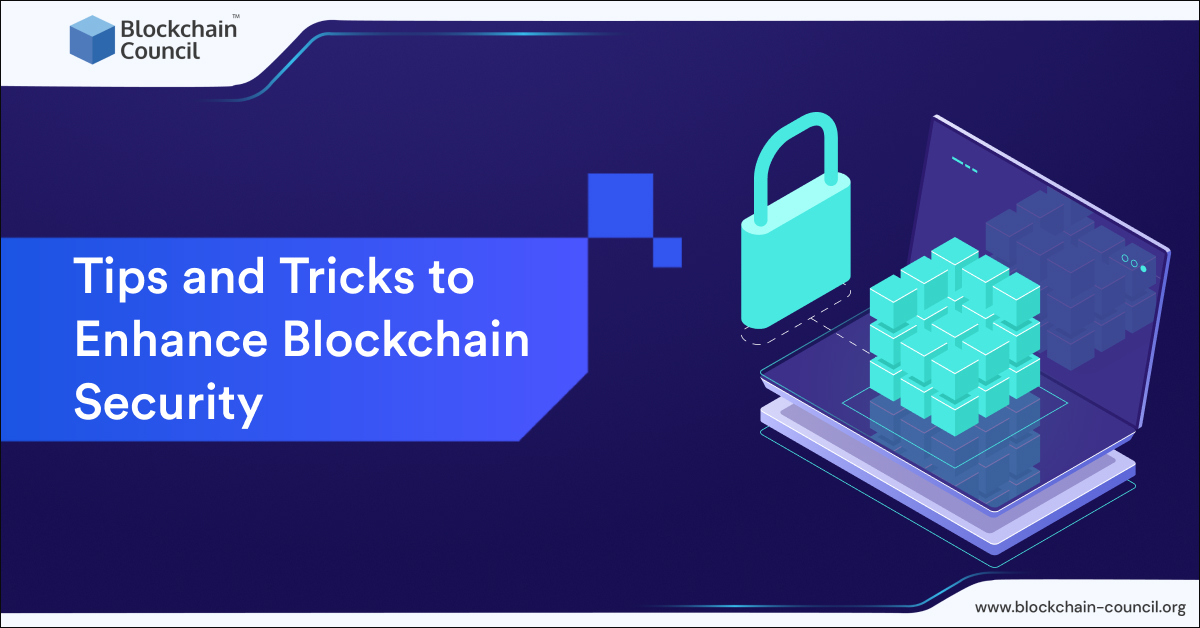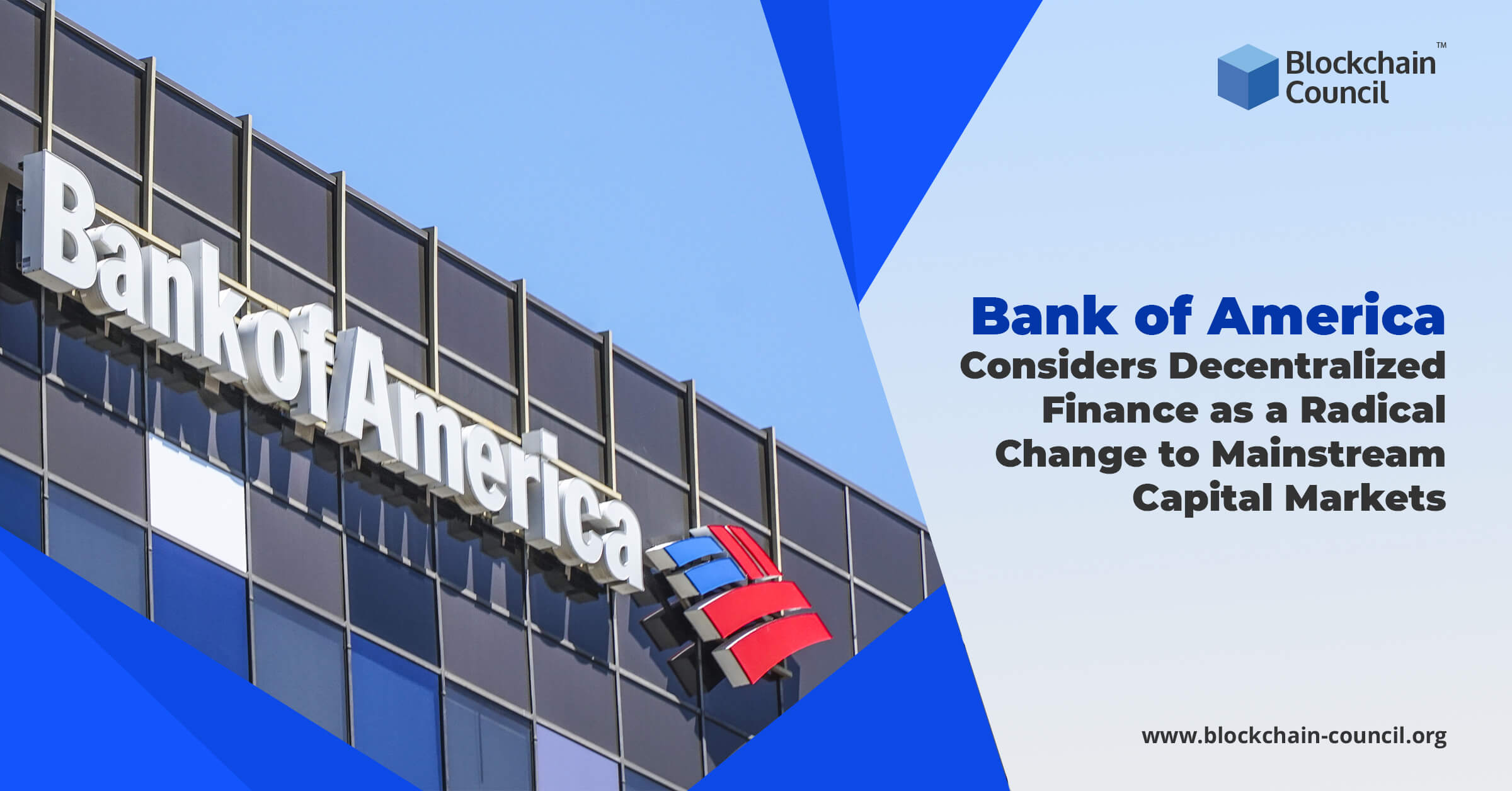
- Blockchain Council
- July 13, 2023
Summary:
- Blockchain security incidents have been on the rise, with reported losses exceeding $4 billion. However, recent practices have resulted in a drop in attacks by over 70%.
- Blockchain security relies on cryptography, consensus mechanisms, decentralization, and smart contracts.
- Encryption techniques such as public key cryptography, digital signatures, and hash functions are crucial for ensuring confidentiality, integrity, and authenticity of Blockchain transactions.
- Securing Blockchain networks involves implementing effective consensus mechanisms, preventing DDoS attacks, and protecting against Sybil attacks.
- Smart contract security requires addressing vulnerabilities such as reentrancy, overflow/underflow, and gas limit issues. Auditing and testing are important before deployment.
- Blockchain wallets need security measures to prevent attacks. Different types of wallets include software wallets, hardware wallets, and paper wallets.
- Private key management is essential to protect access to cryptocurrencies. Hardware wallets are considered more secure, and private keys should be generated and stored securely.
- Access controls, such as user authentication and authorization, help control data access. Two-factor authentication adds an extra layer of security.
- Auditing and monitoring Blockchain systems in real-time can help detect suspicious activity, ensure compliance, and protect against 51% attacks.
- Privacy and anonymity are important aspects of Blockchain. Alternative consensus mechanisms, zero-knowledge proofs, and anonymous cryptocurrencies can enhance privacy.
- Securing Blockchain interactions involves integrating with external systems securely, using trusted oracles, and ensuring interoperability and cross-chain security.
- Education and training initiatives promote security awareness in Blockchain. Building a security-focused community facilitates sharing best practices and collaboration.
Blockchain technology has risen in fame and popularity in recent years due to its vital use cases for industries and businesses. Originally associated with Bitcoin, Blockchain has evolved over the past decade to encompass many applications beyond digital currency. Although the rise of Blockchain is not without its issues, in the past year, more Blockchain security breach incidents were reported than ever, resulting in losses exceeding $4 billion.
These incidents included familiar attacks like phishing and network attacks and new threats specific to Blockchain infrastructure, such as cryptojacking, rug pulls, and 51% attacks. This year, however, is different due to practices adopted by businesses and industries, and the attacks have dropped by over 70%. Let’s look at some of the best tips and tricks that can help maintain Blockchain security in businesses and industries.
Fundamentals of Blockchain Security
Blockchain and its work is easy to understand, but Blockchain security is a different sphere. Each transaction is encrypted and linked to the previous one, forming a chain of blocks. Blockchain security includes different techniques to ensure protection from unauthorized access, hacks, and attacks. Blockchain security relies on several key components, such as:
Cryptography
This uses mathematical techniques to encrypt data, ensuring its confidentiality, integrity, and authenticity. Different techniques to encrypt and decrypt data are used; we will discuss some later in this blog.
Consensus
The agreement among the nodes on the validity and order of transactions, preventing double-spending and malicious attacks. Different consensus mechanisms like proof of work and proof of stake are popular among Blockchains.
Decentralization
The distribution of power and control among many nodes reduces the risk of single points of failure or corruption. Blockchain has taken decentralization to the next level by distributing the work among thousands of worldwide nodes.
Smart contracts
The self-executing programs that define and enforce the rules and logic of transactions eliminate the need for intermediaries or trusted third parties. Once deployed, these contracts cannot be changed, and the transactions will follow the terms mentioned while deploying them.
However, Blockchain security could be more flawless. There have been several cases of Blockchain security breaches. There was a crypto attack in 2016 where an attacker exploited an issue in one of the smart contracts of The DAO, a decentralized autonomous organization, and stole about $50 million worth of ether, the crypto utilized by Ethereum. In.
One of the biggest Bitcoin heists in history happened in 2014, when hackers broke into Mt. Gox, a leading cryptocurrency exchange, and stole about 850,000 bitcoins. The stolen coins were worth a staggering $450 million at the time. In another instance in 2017, a user accidentally triggered a bug in a smart contract of Parity, a popular Ethereum wallet, and locked up about $280 million worth of ether.
Become a Certified Blockchain Security Professional™
Encryption Techniques for Enhanced Security
Encryption techniques are crucial in safeguarding Blockchain transactions, ensuring their confidentiality, integrity, and authenticity. Let’s explore fundamental encryption techniques used in the Blockchain: public key cryptography, digital signatures, and hash functions.
Public Key Cryptography
Public key cryptography, also known as asymmetric cryptography, is a vital encryption technique in the Blockchain. It relies on two keys: a public key and a private key. The public key encrypts data, making it unreadable to unauthorized parties. Only the corresponding private key can decrypt the encrypted data, ensuring secure transmission and storage of Blockchain transactions.
Digital Signatures
Digital signatures play a vital role in verifying the identity and integrity of Blockchain messages. A unique signature is created for each message using public key cryptography based on the message content and the sender’s private key.
Hash Functions
A Hash Function is a powerful tool that transforms any number or string into a compact integer that is the perfect index for your hash table. With a Hash Function, you can quickly and confidently store and retrieve your data.
Securing Blockchain Networks
Blockchain networks face various security challenges and threats that could compromise their functionality and performance. Therefore, securing Blockchain networks is a crucial task that requires the implementation of effective measures and mechanisms. Some of the popular techniques are:
Consensus mechanism
One of the measures for securing Blockchain networks is network consensus protocols, which are the rules and algorithms that govern how nodes agree on the state and history of the Blockchain. Network consensus protocols ensure that all nodes follow the exact version of the Blockchain and prevent malicious nodes from creating forks or altering transactions.
Preventing DDoS attacks
The Blockchain is like a giant ledger that records every cryptocurrency transaction. But sometimes, hackers mess with Blockchain by sending fake traffic or requests to the network. This can slow down, disrupt the network, or even split it into two parts. This is how a distributed denial of service (DDoS) attack occurs, and advanced verification mechanisms should be in place to prevent them.
Prevention against Sybil attacks
Another important step towards securing Blockchain networks is protecting against Sybil attacks, where a malicious node creates multiple fake identities or accounts to gain more influence or control over a network. To protect against Sybil attacks, Blockchain networks can use techniques such as identity verification, reputation systems, or economic incentives.\
Hardening Smart Contracts
Smart contracts are self-executing programs that run on a Blockchain and enable trustless and transparent transactions. Smart contracts can automate business processes, enforce rules and logic, and reduce costs and risks. Smart contract security is the collective term for security principles and practices leveraged by exchanges, developers, and users during the creation of smart contracts and interactions with them.
Some common vulnerabilities and best practices for smart contract security are reentrancy, overflow/underflow, and gas limit. They can be easily solved by some best practices available for each, like using the checks-effects-interactions pattern to avoid reentrancy, using the SafeMath library to prevent overflow/underflow and optimizing code for gas efficiency, and using fallback functions to handle errors.
To ensure the security and quality of smart contracts, it is also necessary to conduct auditing and testing before deployment. Auditing is reviewing the code and design of an intelligent contract to identify and fix any errors, bugs, or vulnerabilities. Testing is verifying the functionality and performance of an intelligent contract under various scenarios and inputs. Auditing and testing can be done manually or automatically using various tools and frameworks.
Wallet Security
Blockchain wallets are essential for interacting with Blockchain networks and smart contracts as they store and manage the crypto for the users. There are different types of Blockchain wallets, depending on how they store the private keys that control cryptocurrency access. All these wallets need security measures to prevent any attack or hack. Some of the common types of Blockchain wallets are:
Software wallets
Software wallets are applications that don’t need any physical devices to save your information. Software wallets are convenient and easy to use but vulnerable to hacking, malware, or device failure.
Hardware wallets
Hardware wallets are physical devices that store the private keys offline, in a secure chip or memory card. However, hardware wallets can be expensive, lost, or damaged.
Paper wallets
These are printed documents containing private keys or QR codes representing them. Paper wallets are also offline and secure from online threats, but they can be easily destroyed, stolen, or misplaced.
There are other ways to classify Blockchain wallets, like their internet connection. Cold wallets are offline wallets not connected to the internet, such as hardware or paper wallets. Hot wallets are online wallets that are connected to the internet, such as software or web-based wallets. Cold wallets are more secure than hot wallets but are less convenient and accessible.
A third way to classify Blockchain wallets is by the number of signatures required to authorize a transaction. Multi-signature wallets that require multiple signatures to operate provide an extra layer of security and control, as they can prevent unauthorized transactions or require approval from multiple parties.
Secure Key Management
Private critical security protects the secret codes controlling access to cryptocurrencies and Blockchain transactions. Private keys are essential for encryption, decryption, and verification of crypto wallets or user accounts. Private keys should be kept secret and stored securely, as losing or exposing them can result in irreversible loss of funds or identity theft.
Different types of devices can store private keys, depending on their level of security and convenience. Hardware wallets are one of the most popular ways to save cryptocurrency. They are physical devices that store the private keys offline, in a secure chip or memory card. Hardware wallets are considered more secure and trustworthy than software wallets, as they are safe from online attacks and can be used on any computer.
Now, let’s look at private key Generation and some storage practices that should be followed.
Key generation
Generate private keys using a secure and random source, such as cryptographic software or hardware. Avoid using weak or predictable sources, such as passwords or phrases.
Key storage
Store private keys in a safe and accessible location, such as a hardware or paper wallet. Avoid storing private keys on devices connected to the internet or shared with others. Backup, private keys in multiple locations and formats, such as paper, USB drives, or cloud storage
Implementing Access Controls
Access control is a core element of security that determines who can access specific data, apps, and resources and in what circumstances. Access control uses techniques such as user authentication and authorization, which verify whether a user can access the information. User authentication verifies that a user is who they claim to be, using various credentials, while user authorization grants or denies access to a user.
When it comes to controlling who can access what in a system, there are different ways to do it. For example, Discretionary access control (DAC), Mandatory access control (MAC), Role-based access control (RBAC), and Attribute-based access control (ABAC). RBAC is the most common one, where users get different levels of access and permissions depending on their roles and rank in the system.
Another popular and efficient way to implement access control is two-factor authentication (2FA), an additional security layer requiring more than one verification method to authenticate a user. 2FA can prevent unauthorized access even if the user’s credentials are compromised as the user is notified to ensure they are accessing the information.
Auditing and Monitoring Blockchain Systems
Blockchain technology allows entities to store and share transactional information in a controlled and systematic way. However, Blockchain also poses new challenges and risks that require effective auditing and monitoring solutions. Some of the critical aspects of auditing and monitoring Blockchain systems are:
Real-Time Monitoring for Suspicious Activity
Blockchain transactions are recorded in a distributed ledger visible to all participants, but they are not immune to fraud, manipulation, or errors. Real-time monitoring can help detect and prevent potential issues before they escalate or compromise the integrity of the Blockchain system.
Blockchain Analytics and Forensics
Blockchain analytics can help auditors gain insights into the behavior, trends, and patterns of the Blockchain participants and identify any gaps, errors, or inconsistencies in the data generated during the transactions on the Blockchain. Blockchain forensics can help auditors trace specific transactions’ origin, destination, and history and verify their validity and authenticity.
Security Audit and Compliance
Blockchain systems are designed to be secure and resilient but not invulnerable to cyberattacks or human errors. A security audit should include mining pool monitoring, intelligent contract verification, private essential storage practices, and routing attack prevention.
Protecting Against 51% Attacks
A 51% attack seriously threatens any Blockchain network that relies on a proof-of-work consensus mechanism. They can prevent new transactions from being confirmed, reverse previous transactions, and double-spend their coins. Blockchain networks must adopt various measures to protect against 51% of attacks.
Some Blockchain networks use alternative consensus algorithms more resistant to 51% attacks than proof-of-work. This makes it more costly and risky for attackers to acquire a majority stake in the network. Other algorithms, such as proof of authority or reputation, rely on trusted or reputable nodes to validate transactions. In contrast, others implement additional security measures to deter or mitigate 51% of attacks. For example, Bitcoin has checkpoints, fixed points in the Blockchain history that any attacker cannot change.
51% of attacks are a significant challenge for Blockchain security and trust. However, they are not impossible to prevent or overcome. Using appropriate consensus algorithms and security measures, Blockchain networks can reduce the risk and impact of 51% of attacks and ensure their integrity and reliability.
Privacy and Anonymity in Blockchain
Privacy and anonymity are often called the backbone of Blockchain, but several necessary steps must be taken to ensure privacy and security.
Challenges and Risks of Privacy
Even the consensus mechanisms that ensure privacy can often be complex, like proof of work. The process of verification using a consensus mechanism consumes a lot of energy and resources, making it vulnerable to 51% attacks, where a group of miners or hackers can control most of the network’s hashing power and manipulate the Blockchain.
Privacy-Enhancing Techniques
To overcome the challenges and risks of privacy, some Blockchain networks use alternative consensus mechanisms or additional security measures that enhance privacy. Some networks also use zero-knowledge proofs, cryptographic techniques that enable verification without disclosing data.
Anonymous Cryptocurrencies
Different cryptocurrencies are made to maintain and ensure that their owners’ identities are not disclosed to any hacker. This is done by using advanced smart contract techniques or security measures.
Securing Blockchain Interactions
Blockchain interactions are limited to transactions within the Blockchain network and involve interactions with external systems, such as IoT devices, web services, or other Blockchains. These interactions pose various security challenges and risks, such as:
Secure Blockchain Integration with External Systems
Blockchain networks must communicate and exchange data securely and reliably with external systems. But these external systems are often prone to different attacks and vulnerabilities. Blockchain networks can implement security measures, such as two-factor authentication, allowing listing, encryption, and digital signatures, to ensure the authenticity and integrity of the data and devices.
Oracles and Data Feeds
Oracles are intermediaries that provide external data or services to smart contracts running on a Blockchain network. But, oracles may also introduce security risks like data manipulation, conspiracy, or corruption. Thus Blockchain networks must use trusted or decentralized oracles that provide verifiable and tamper-proof data feeds.
Interoperability and Cross-Chain Security
Interoperability is the ability of different Blockchain networks to communicate and exchange value. Blockchain networks must use interoperability protocols or platforms to ensure cross-chain transactions’ security and consistency.
Education and Training for Security Awareness
Increasing awareness is one of the best ways to increase the implementation of different Blockchain security measures. Security awareness can be enhanced through various education and training initiatives, such as:
Promoting Security Culture in Blockchain
A strong security culture where everyone believes in the importance of security can foster a mindset among Blockchain users and developers, supporting security education, resources, and participation as part of an organization’s culture and values.
Training Resources and Certifications
Training resources and certifications can help Blockchain users and developers acquire the knowledge and skills to secure Blockchain systems and mitigate security risks. Various training resources and certifications can help you understand Blockchain security, such as online courses, books, and seminars. You can also check out our courses, where we have discussed all the best tips and tricks to maintain security on a Blockchain network in great detail. These courses can help you to grow into a professional that understands the importance of Blockchain security and its implementation.
Building a Security-Focused Community
Building a security-focused community can help Blockchain users and developers share their experiences, insights, and best practices on Blockchain security. A security-focused community can also provide peer support, feedback, and collaboration opportunities for Blockchain security projects and initiatives.
Conclusion
We have discussed all the essential security measures from access control, securing wallets, maintaining privacy, and more in this blog and different tips related to them that you can utilize to secure the working of your organization. The importance of Blockchain security should be addressed at any cost by organizations, as it can lead to vulnerabilities and hacking attacks in the long term. By learning about the best practices, individuals can increase their opportunities in the field and help organizations to reach their goal of secure and transparent services.
Frequently Asked Questions
Become a Certified Blockchain Security Professional™
- Cryptography: Ensures data confidentiality, integrity, and authenticity.
- Consensus: Prevents double-spending and malicious attacks by reaching agreement among nodes.
- Decentralization: Reduces the risk of single points of failure or corruption.
- Smart contracts: Self-executing programs that enforce transaction rules without intermediaries.
- Public Key Cryptography: Uses public and private keys to encrypt and decrypt data.
- Digital Signatures: Verify the identity and integrity of Blockchain messages.
- Hash Functions: Transform data into compact integers for secure storage and retrieval. How can Blockchain networks be secured?
- Consensus mechanism: Establishes rules for nodes to agree on the Blockchain’s state and history.
- Preventing DDoS attacks: Implement advanced verification mechanisms to prevent fake traffic overload.
- Prevention against Sybil attacks: Use identity verification, reputation systems, or economic incentives.
- Protecting against 51% attacks: Utilize alternative consensus algorithms, security measures, or checkpoints.
- Hardening Smart Contracts: Use best practices like avoiding reentrancy, preventing overflow/underflow, and optimizing gas efficiency.
- Auditing and Testing: Review the code for errors, bugs, or vulnerabilities, and verify functionality and performance.
How can Blockchain wallet security be ensured? - Types of wallets: Choose between software wallets, hardware wallets, or paper wallets based on security needs.
- Cold vs. Hot wallets: Cold wallets (offline) are more secure but less convenient, while hot wallets (online) are more accessible.
- Multi-signature wallets: Require multiple signatures for transactions, providing an extra layer of security and control.
- Key generation: Generate private keys using secure and random sources, avoiding weak or predictable ones.
- Key storage: Store private keys in secure and accessible locations like hardware or paper wallets, avoiding internet-connected devices or sharing with others.
- Backup: Create backups of private keys in multiple locations and formats.
- Real-time monitoring: Detect and prevent potential issues or fraudulent activity.
- Blockchain analytics and forensics: Gain insights into participant behavior, verify transactions’ origin and history.
- Security audit and compliance: Include monitoring mining pools, verifying smart contracts, and preventing routing attacks. How can access control be implemented in Blockchain systems?
- User authentication and authorization: Verify user identity and grant or deny access based on roles and permissions.
- Two-factor authentication (2FA): Add an extra layer of security by requiring multiple verification methods.



































































 Guides
Guides News
News Blockchain
Blockchain Cryptocurrency
& Digital Assets
Cryptocurrency
& Digital Assets Web3
Web3 Metaverse & NFTs
Metaverse & NFTs
